Office Design of the Future: The Liqui view on the Hybrid Office
In May 2020, in the midst of the Covid-19 pandemic, Liqui made a speculative forecast, attempting to predict the future of the office and office design. They said: “the biggest change that will be adopted, with even greater momentum, is design for flexibility and well-being.” More than two years later and with a widespread adoption of the ‘hybrid office’ or ‘hybrid model’, it seems they may have been right. Hybrid office design is a response to the need for better flexibility and well-being.
[Find Liqui Contracts on the BCFA Product Finder]
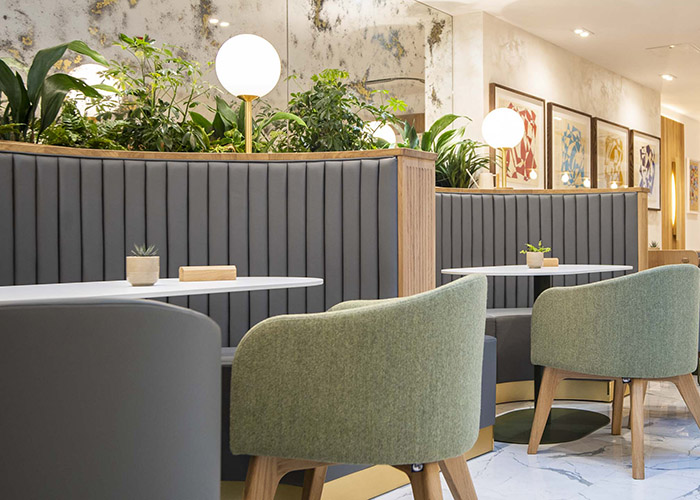
The hybrid office
One major impact of the pandemic was how it changed the way in which people work— today’s workforce have, on the whole, a different view of working practices compared with pre-pandemic ways of working. With hybrid working post covid there is a much greater emphasis on the importance of a work-life balance. Employees want to keep the flexibility that comes with home working, but at the same time have a desire to avoid the loneliness and isolation experienced when home working during the pandemic was obligatory. A study conducted in March 2021 by intelligent learning platform HowNow, showed that more than two-thirds (67%) of UK-based remote workers felt disconnected from their colleagues.
Moreover, half (49%) admitted this sense of disconnection was having a negative impact on how they viewed their job. From this, we can infer that a majority of workers would like to have the best of both worlds. A post-Covid shift in perspective has tilted the balance in favour of family, personal life, health, and well-being over work. This means that hybrid workplace design has an important role to play in addressing this fundamental change in employees’ priorities.
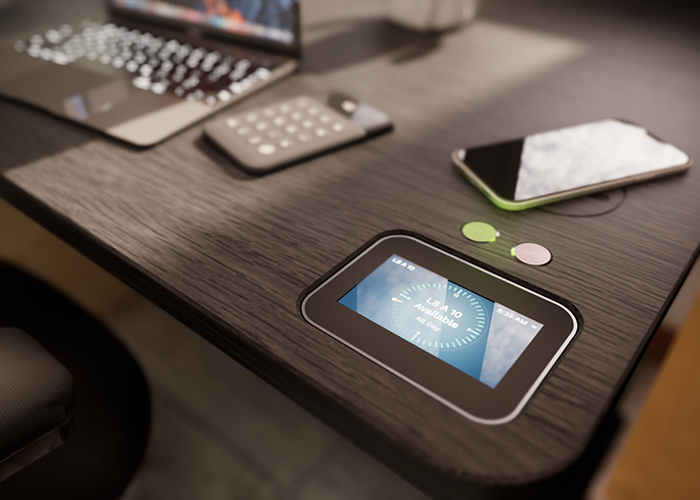
For the employers’ part, to attract and retain staff they should be aware of this new way of thinking. Where home working was an essential requirement for tackling the pandemic, today it is anything but a blip or fad: after more than two years of working from home, people have proved they can be trusted, reliable employees and have a better work-life balance. As a consequence, flexibility and well-being are non-negotiable terms for many employees. The prospect of returning to the status quo—working 9–5 at a stationary, office-based desk—no longer appeals. To address this new normal, business leaders are seeking ways to accommodate employees through office layout, improved facilities, and technology. Good hybrid office design, enables employers to offer flexibility and improved well-being for their employees.
A hybrid office can be described as a place where people go in order to work with others (whereas the traditional office is where people go simply to do their work). The hybrid workplace is centred around group activities, such as collaborative working, meetings, and brainstorming sessions. Remote working is then reserved for individual work-related activities. Hybrid offices should also be viewed as social destinations, playing an important role in reconnecting people and businesses. A primary role of a hybrid office design must be to make any commute worth undertaking. It should create a flexible work environment of choice that serves to nudge human behaviour in a way that fosters teamwork, creativity, and innovation, while simultaneously encompassing a sense of community, shared culture, and well-being.
To achieve this, Liqui believes there are two key areas to focus on when designing a hybrid office: flexible working and wellness.
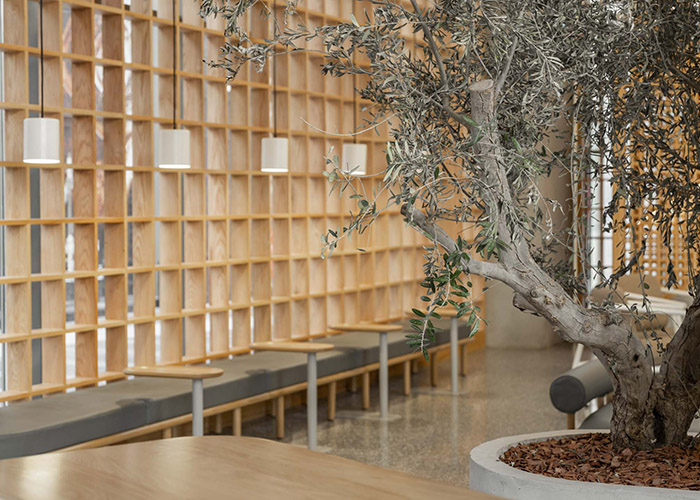
Flexible working
Flexible working is about providing the choice between remote and physical work environments, where collaboration happens seamlessly, and employees are free to work wherever they feel most comfortable and productive. The majority of employees want the choice to work remotely for part of the week, coming into the office when needed. It is important that employers do not impose a single style of working on employees—the best way to achieve this is by offering choice.
Offering choice means designing a hybrid office that accommodates different modes of working. This necessitates the consideration of the many ways in which a business and its employees operate, thereby designing spaces that cater to those working in the office and remotely. Any design should give thought to the following: social areas with comfortable seating, enclosed areas for more individual and small group tasks, quiet nooks for meetings, and conference rooms for video calls with colleagues and clients.
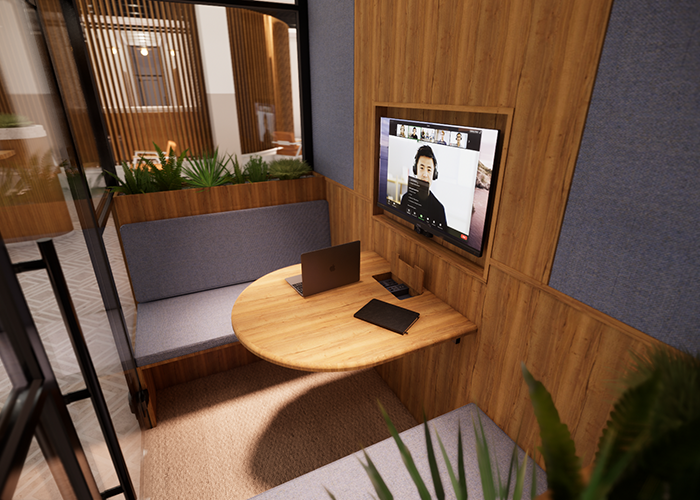
Desks are a key element of a flexible work space and a range of solutions should be taken into account (beyond that which is typical of the traditional office). It may be the case that some employees require or want a fixed location to work from—while recognising this, a good hybrid office design should seek to reduce the number of desks, opting instead for hot desks. With many employees working remotely, a hot desk environment allows every employee to book a desk, via a booking system, as and when required.
A reduction in desks increases the amount of office space available for a range of collaborative working and social environments; importantly, employees no longer feel tethered to their desks. Hybrid workplace design that embrace flexibility, choice, and collaboration will facilitate cooperation by people across departments, helping to solve complex problems and shape innovative ideas. The realisation of such collaborations is often fortuitous, however they can be made more likely by employing ‘nudge tactics’: the strategic placement of a printer station where a conversation is sparked by a passing colleague, or a centralised high table where a new member of staff overhears a stand-up meeting, stops to ask a question, and makes a contribution (what we call the ‘kitchen table’ effect). A well conceived hybrid office design should create a hub for these encounters, while striking a balance between openness and privacy: a coffee-shop-meets-library style environment.
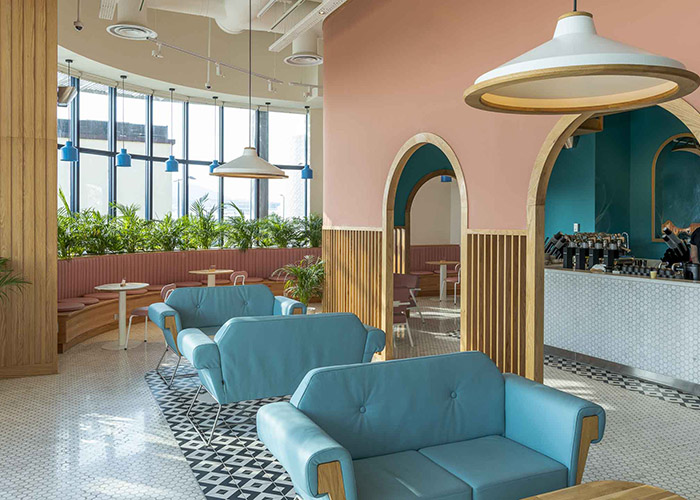
Design and layout of the hybrid office are created with the understanding that work happensas much in the canteen and coffee nook as it does at the desk. However, design and layout can only do so much. If the hybrid workplace is to become a destination that employees will happily commute to and fully avail of, then a top-down approach is required. Senior management should take the lead by providing clear guidance to employees, while experimenting with and evolving what works best for their teams. Leaders must also be intentional about connecting hybrid and remote employees into the organisation’s working culture. To achieve this, it is crucial that the most up-to-date technology seamlessly bridges the gap between remote and office-based staff: a fully functioning hybrid workspace needs the tools to empower remote collaboration.
From Liqui’s perspective, we believe that if a hybrid office is to truly offer flexible working for all employees, then investment is required in four key areas: design, hardware, software, and culture. This will result in improved productivity because irrespective of where staff members are based, they can make the most of their day.
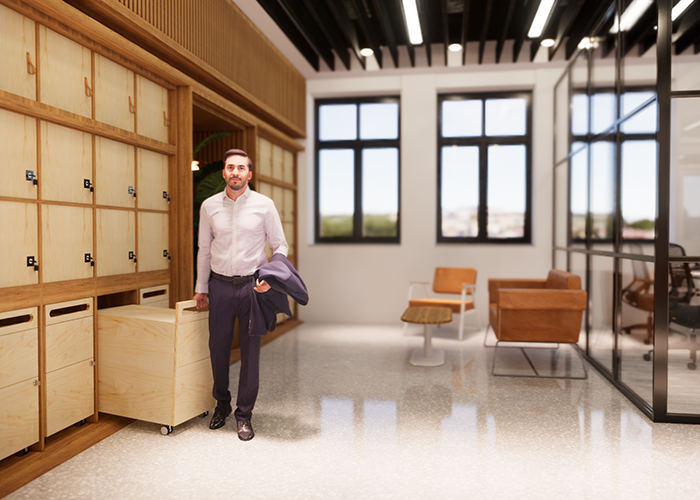
Workplace wellbeing
The idea of wellbeing in the workplace isn’t new and was in fact gaining much attention prior to the pandemic. In the aftermath of Covid-19, workplace wellbeing has come into sharp focus and is fundamental to the hybrid office model.
According to Microsoft’s ‘2022 Work Trend Index’ (a study of 31,000 people in thirty-one countries), 53% of employees are now more likely to prioritise health and well-being over work than before the pandemic.
Social interactions were mostly virtual during the pandemic—this continual online way of communicating served as a reminder of the importance of face-to-face conversation and connection. At the same time, the mental health concerns and anxiety levels of many people were exacerbated due to factors such as unemployment and the loss of income. Employers cannot overlook these issues and office designers must work to ensure wellness is at the core of any workspace design.
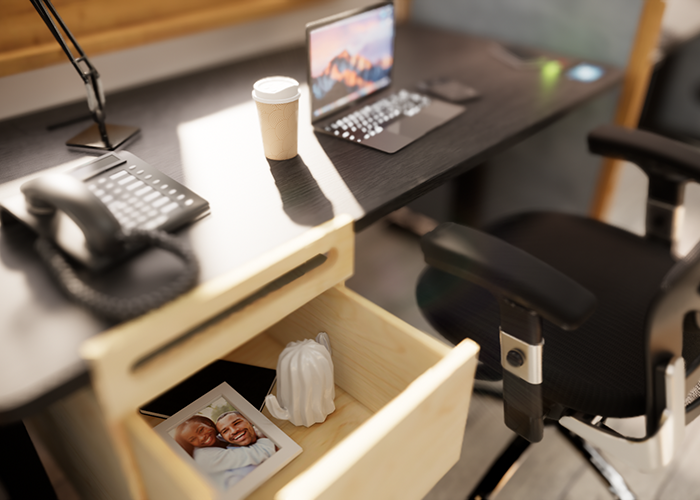
In a hybrid workplace, meeting people’s needs is paramount and therefore human-centric design will play a pivotal role. The inclusion of well-designed furniture, acoustics, lighting, and greenery will help bolster employee wellness. If the hybrid office design is to be a success, then people need to make use of the space. It should feel like a home from home, a place where the person wants to be and is not compelled to be.
We believe the hybrid office should fully embrace the idea of the ‘coffice’, a portmanteau word combining coffee and office. Essentially, there are three types of spaces: home, work, and the third space. This third space is something like a coffee shop, a place in which to drink coffee, socialise, and work. In the years before Covid-19 we saw an increase in people choosing to work from coffee shops. We also saw workspaces begin to adopt the coffee shop aesthetic. As a consequence, the line between the office and third space was becoming increasingly blurred. We believe this trend should be embraced and the hybrid office, by its very nature, embodies this. It quashes the sterile, rigid idea of the office of old, and instead offers flexibility with more of a coffee shop feel. This approach places an emphasis on employee well-being, on collaborative working, creativity, productivity, and staff retention.
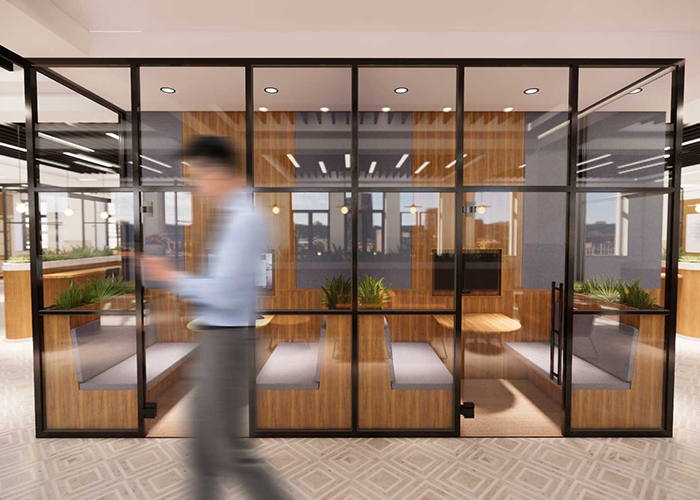
By developing spaces that allow colleagues to nurture better bonds, a well thought out hybrid office design will improve people’s well-being. As a result, employees can enjoy a greater work-life balance, the freedom to choose where and how they work, and a reinforced sense of community. This sense of community helps to boost employee engagement and happiness levels, which, in turn, boosts a business’s bottom line. Designed with the entire workforce in mind, the hybrid office can empower people to do their best work.
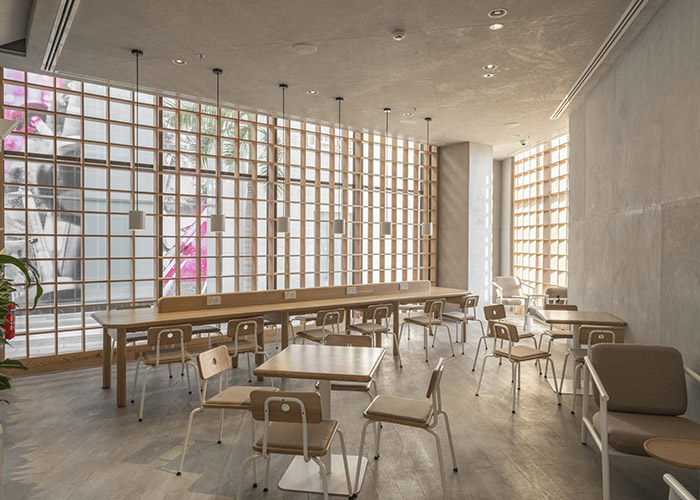
Contact Liqui Contracts through BCFA Product Finder.
The BCFA Product Finder is a unique search engine created especially for interior designers to source contract furnishing companies. Utilising this platform will support your findings for upcoming projects, with over 200 members profiles showcasing the latest product launches, new materials available, industry news and design trends.




